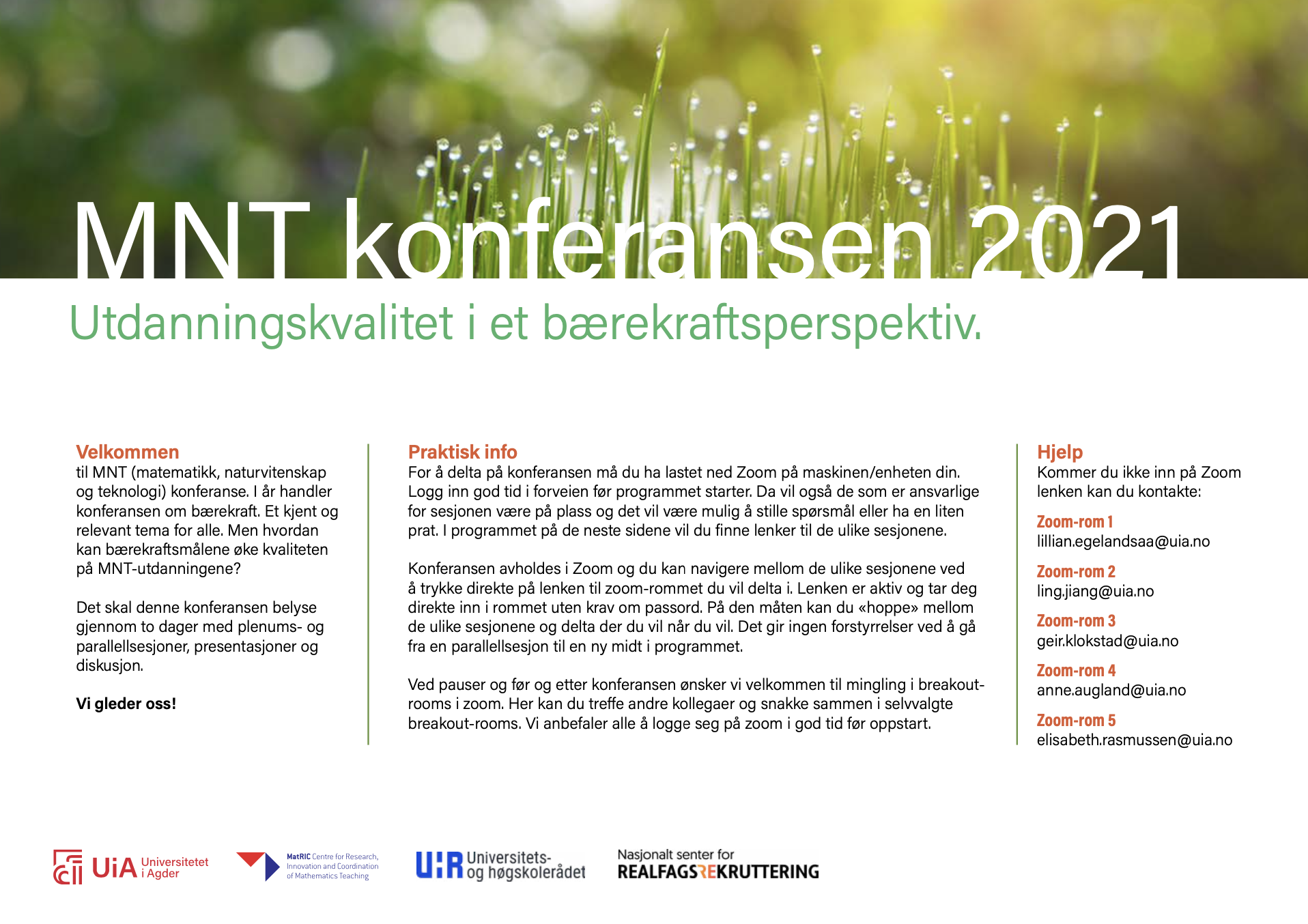Nettundervisning i matematikk - hva skal til for å lykkes?
DOI:
https://doi.org/10.5324/njsteme.v5i1.3945Abstract
I mars 2020 måtte hele UH sektoren brått legge om all undervisning fra campusbasert undervisning til undervisning på digitale plattformer på grunn av utbruddet av Covid 19. De fleste lærere valgte å kjøre undervisningen som nettbasert undervisning ved hjelp av Zoom, gjerne i kombinasjon med andre digitale løsninger som f. eks bruk av læringsvideoer. For mange var dette en helt ny måte å jobbe på. Overgangen fra å stå i klasserommet til plutselig å drive nettundervisning fra PC var stor for mange. Med dagens teknologi er det fullt mulig å gjennomføre god og variert undervisning også på nettet. I artikkelen ser vi nærmere på hvordan vi kan utnytte mulighetene som ligger i Zoom og hvordan vi kan bruke ulike verktøy og programmer i kombinasjon med Zoom. Artikkelen fokuserer også på ulike grep vi som lærere kan gjøre ved gjennomføring av undervisningen for at den skal bli best mulig. Eksemplene er i hentet fra matematikkfaget, men mye av det som presenteres har også en overføringsverdi til andre fagområder.
Nedladdningar
##submission.downloads##
Publicerad
Nummer
Sektion
Licens
Copyright (c) 2021 Peer Sverre Andersen

Det här verket är licensierat under en Creative Commons Erkännande 4.0 Internationell-licens.
The Nordic Journal of STEM Education licenses all content of the journal under a Creative Commons Attribution (CC-BY) licence. This means, among other things, that anyone is free to copy and distribute the content, as long as they give proper credit to the author(s) and the journal. For further information, see Creative Commons website for human readable or lawyer readable versions.
Authors who publish with this journal agree to the following terms:
1. Authors retain copyright and grant the journal right of first publication with the work simultaneously licensed under a Creative Commons Attribution License that allows others to share the work with an acknowledgement of the work's authorship and initial publication in this journal.
2. Authors are able to enter into separate, additional contractual arrangements for the non-exclusive distribution of the journal's published version of the work (e.g., post it to an institutional repository or publish it in a book), with an acknowledgement of its initial publication in this journal.
3. Authors are permitted and encouraged to post their work online (e.g., in institutional repositories or on their website) prior to and during the submission process, as it can lead to productive exchanges, as well as earlier and greater citation of published work (See The Effect of Open Access

